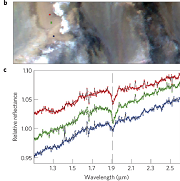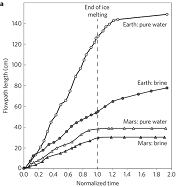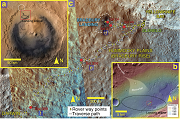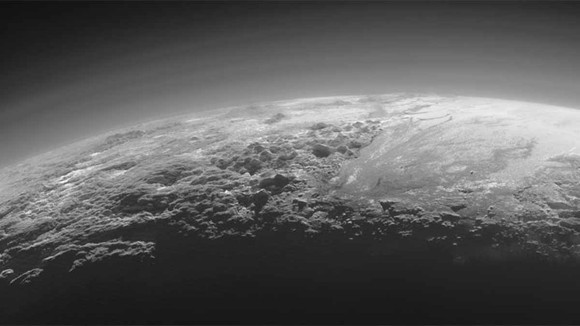There is abundant evidence that Mars has experienced in its history relatively prolonged conditions that allowed liquid water on its surface.
Nowadays, Mars is mostly a dry planet with a thin CO2 atmosphere, but sometimes surface pressure and temperature values permit the presence of liquid water. Recent discoveries such as the ones presented below have given the strongest evidence to date that transient liquid water episodes are still happening on Mars.
 This paper by Ojia et al. published in Nature Geoscience in 2015 (freely available for a limited time) exhibits clear indications of hydrated minerals where observed slope flow traces have been observed. This finding allows us to link these slope lineae to present water activity.
This paper by Ojia et al. published in Nature Geoscience in 2015 (freely available for a limited time) exhibits clear indications of hydrated minerals where observed slope flow traces have been observed. This finding allows us to link these slope lineae to present water activity.

Massé et al. created their own Mars slope in the lab to study flowing processes at different conditions and presented their results in Nature Geoscience. Differently from Earth, ice melting on Mars can lead to a complex hybrid process that involves both dry and liquid mechanisms and carves the landscape.
A related News & Views discusses the results of the paper in more detail.
 Still on water-induced transport, but glancing at a past when water was more abundant on Mars, Szabó et al. combine observations, laboratory experiments, models and terrestrial analogues to reconstruct the history of transport pebbles on Mars in Nature Communications, our open access publication.
Still on water-induced transport, but glancing at a past when water was more abundant on Mars, Szabó et al. combine observations, laboratory experiments, models and terrestrial analogues to reconstruct the history of transport pebbles on Mars in Nature Communications, our open access publication.

